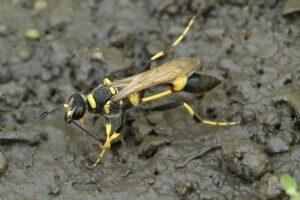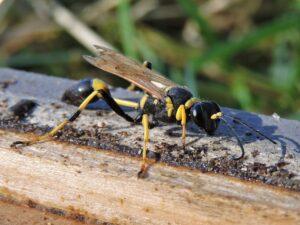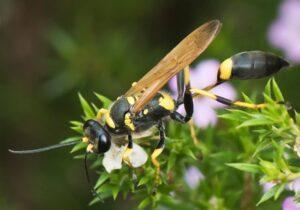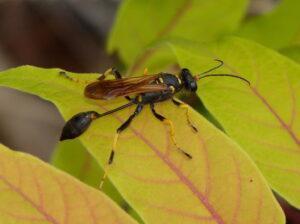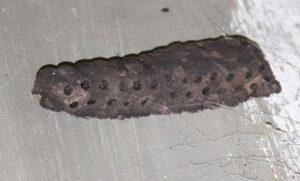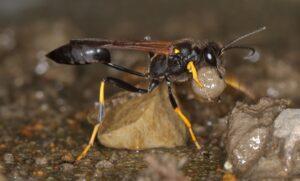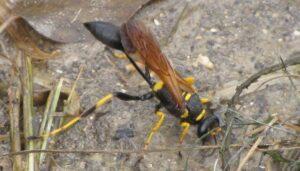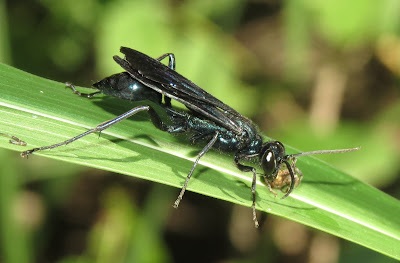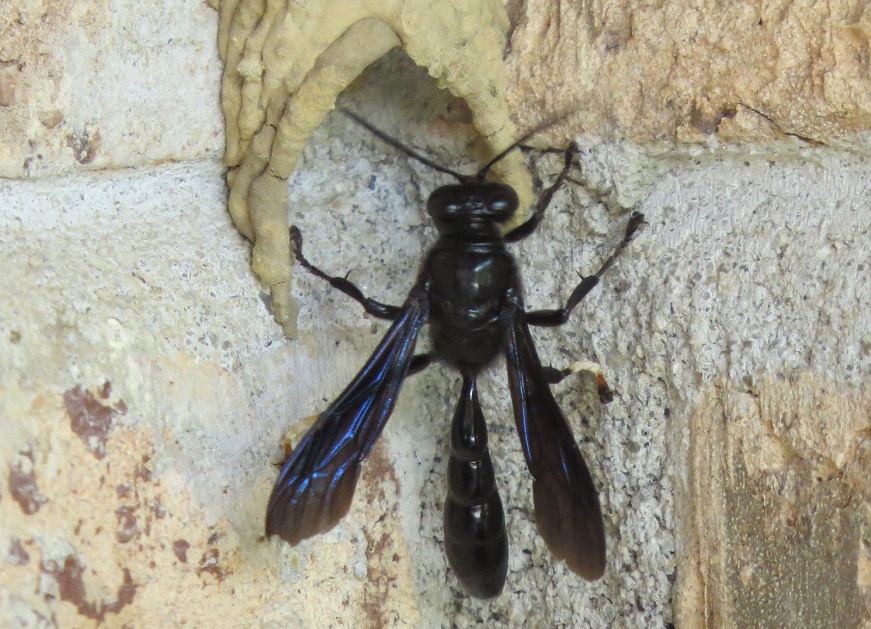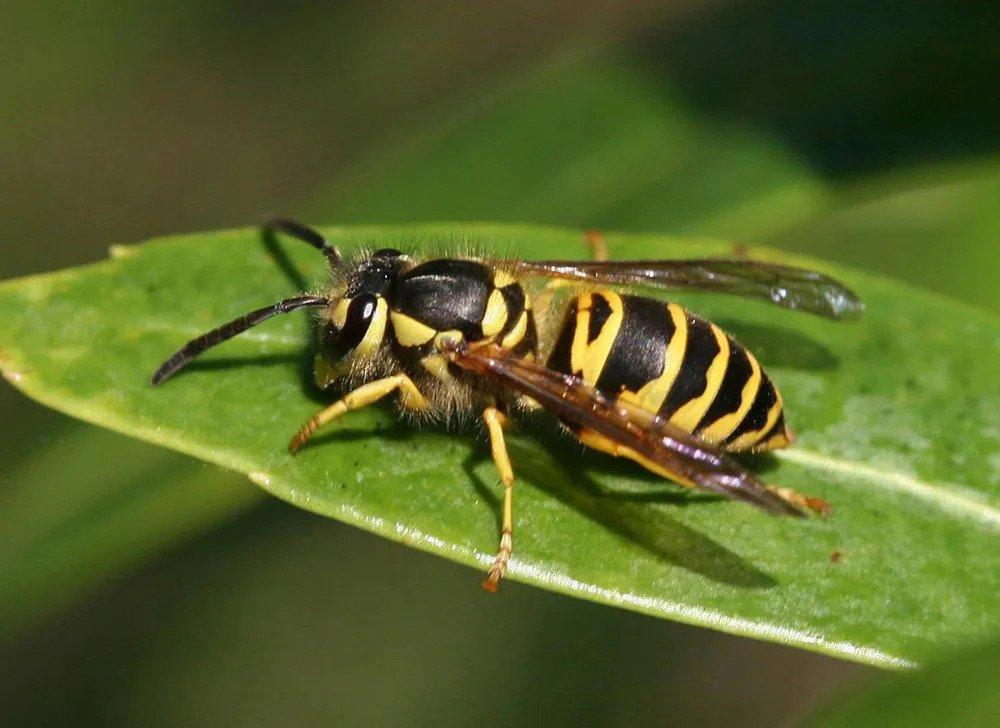Black and Yellow Mud Dauber (Sceliphron caementarium)
Updated on
17/11/2022The black and yellow mud dauber is a species of sphecid wasp that is also known by the names yellow-legged mud dauber wasp and black-waisted mud dauber. Its specific name, caementarium is derived from the Latin caementarius, which means mason or wall builder.
Scientific Classification
- Class:Insecta
- Order:Hymenoptera
- Family:Sphecidae
- Genus:Sceliphron
- Species:S. caementarium
Conservation Status
Description
The parasitoid wasp can reach a length of 0.9-1.09 in (24-28 mm). Its narrow waist is usually black (except in the desert southwest, where it is yellow) and nearly half the length of the abdomen. The thorax has various yellow marks, and the abdomen is usually black with a yellow first segment. While the antennae and eyes are black, the legs are yellow with black femurs and trochanters. It is the only species in the US with yellow marks on its legs. The insect has tawny wings.
Distribution: It is widespread in the United States, Canada, the West Indies, and Central America. It has been introduced to many islands in the Pacific (including Australia, Japan, and Hawaii), Europe, and Peru. Of these places, it established itself in Ukraine, Austria and some countries of the Mediterranean Basin like France and Corsica, Croatia, Cyprus, Italy, the Canary Islands, Malta, and Madeira.
Habitat: Man-made structures, rock hedges, cypress domes, turkey oaks, long leaf pines, puddles, and other water edges.
Do They Bite/Sting: Yes.
Lifespan: 3-6 weeks.
Predators: Birds and spiders.Parasitoid wasps, flesh flies, bee flies, velvet ants, and cuckoo wasps parasitize the immature stages of the insect.
Behavior and Characteristics
Diet
It feeds on the nectar of flowers, especially Queen Anne’s Lace, water parsnips, and parsnips.
Nest-building
The wasp builds its nest out of mud. It collects mud balls at pool edges and puddles to make its nest. Mostly nests are constructed in shaded areas inside natural or man-made structures (like under and inside bridges, garages, barns, housing eaves, and open-air porches) that are protected from the elements.
A nest has up to 25 individual, cylindrical, vertically arranged cells. After initial making and covering of the clutch, the wasp uses more mud to cover the entire cluster of cells to give it a smooth appearance. The nest can have an area equal to or more than an average human fist.
After building the nest, the female black and yellow mud dauber captures some spiders by stinging and paralyzing them. They are then stuffed into the nest (usually 6-15 in a cell), and a single egg is laid on them in each cell. The cell is then sealed by a thick mud plug. After being done with a series of cells she leaves never to return again.
The larva feeds on the prey as it molts several times until it turns into a pupa. When the adult comes out of the pupal case in mid-summer, it breaks out of the mud chamber.
It is quite interesting that the black and yellow mud dauber’s nest blocking the Pitot tube of the Birgenair Flight 301 was cited as the most probable cause of the crash of the Boeing 757 aircraft in 1996.
Life Cycle
1. Egg Stage
The cream-white, curved eggs measure 0.3-0.4 mm in length.
2. Larva Stage
The larva hatches from the eggs in 1.5-3.5 days. Its color is cream initially and gradually changes to bright yellow as it grows. It consumes all the provisioned spider prey in 1-3 weeks, depending on the temperature. The pre-pupal stage enters diapause in winter till the temperature rises.
3. Pupa Stage
The pupal case or cocoon is spun inside the nest cell. It is thin, reddish-brown, and oblong.
4. Adult Stage
The adults have a low reproductive rate. They rarely sting due to their solitary and non-aggressive nature. But they do defend their nests aggressively.
FAQs
No, they are not dangerous as they are not aggressive and sting only when trapped or held close to the body. The sting is mild and much less painful than that of social bees and wasps.
Source
jungledragon.com, blogspot.com, knowyourinsects.org, inaturalist.ca, entnemdept.ufl.edu, i.pinimg.com




